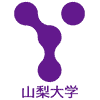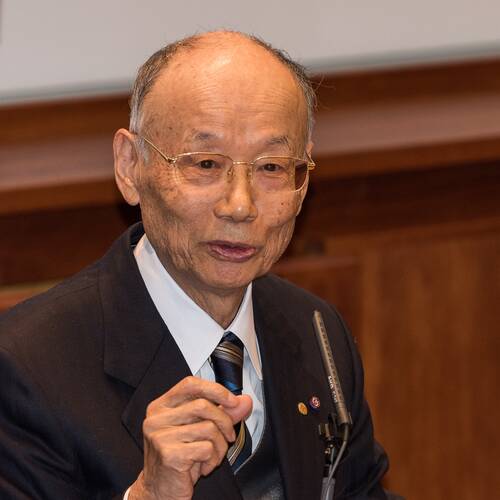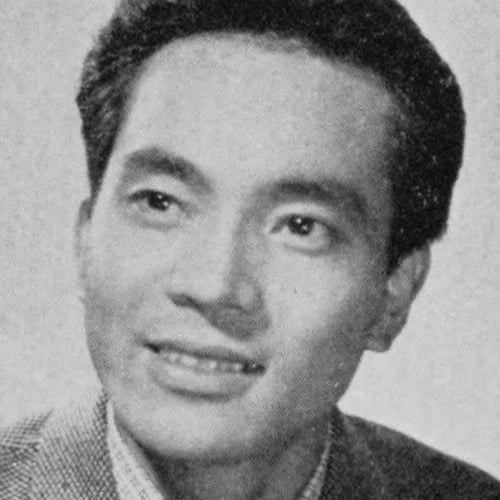University of Yamanashi: Statistics
Updated:


| Position | Category |
|---|---|
| #1230 of 14,131 | In the World |
| #323 of 5,830 | In Asia |
| #70 of 719 | In Japan |
| #1 of 4 | In Kofu |
| #244 of 1,016 | For Hydrology and Water resources management |
| Top50% | For 114 other topics |
Quick Review
- Acceptance rate
- 30%
- Type
- Non-profit
- Funding
- Public-private
partnership - Highest Degree
- Bachelor
- Website
- www.yamanashi.ac.jp
- Languages
- Japanese
Acceptance rate & Admissions
| Acceptance Rate | 30% |
|---|---|
| Admissions Requirements | Graduation from high school or recognized equivalent, and entrance examination |
| Academic Calendar | April to March (April - September; October-March) |
We've calculated the 30% acceptance rate for University of Yamanashi based on the ratio of admissions to applications and other circumstantial enrollment data. Treat this information as a rough guide and not as a definitive measure of your chances of admission. Different programs may have significantly varying admissions rates.
Research profile
University of Yamanashi is a world-class research university with 21,992 scientific papers published and 393,639 citations received. The research profile covers a range of fields, including Biology, Chemistry, Engineering, Physics, Medicine, Organic Chemistry, Quantum and Particle physics, Biochemistry, Genetics, and Materials Science.
University of Yamanashi majors
by publication & citation count
Annual publication & citation counts
| Year | Publications | Citations |
|---|---|---|
| 1992 | 159 | 985 |
| 1993 | 228 | 1012 |
| 1994 | 288 | 1238 |
| 1995 | 340 | 1243 |
| 1996 | 385 | 1445 |
| 1997 | 356 | 1925 |
| 1998 | 375 | 2374 |
| 1999 | 387 | 2721 |
| 2000 | 455 | 3395 |
| 2001 | 412 | 3800 |
| 2002 | 478 | 4401 |
| 2003 | 537 | 4971 |
| 2004 | 536 | 5592 |
| 2005 | 542 | 6231 |
| 2006 | 591 | 7582 |
| 2007 | 565 | 8245 |
| 2008 | 601 | 9450 |
| 2009 | 647 | 10573 |
| 2010 | 657 | 11844 |
| 2011 | 753 | 13279 |
| 2012 | 767 | 15014 |
| 2013 | 803 | 15995 |
| 2014 | 809 | 17143 |
| 2015 | 802 | 18140 |
| 2016 | 756 | 17555 |
| 2017 | 843 | 18936 |
| 2018 | 909 | 19784 |
| 2019 | 843 | 21324 |
| 2020 | 917 | 25747 |
| 2021 | 907 | 28535 |
| 2022 | 872 | 28425 |
| 2023 | 891 | 28290 |
| 2024 | 734 | 26936 |
Programs and Degrees
| Gakushi | Biological and Life Sciences, Education, Engineering, Environmental Studies, Medicine |
|---|---|
| Shushi | Biological and Life Sciences, Engineering, Environmental Studies, Medicine, Nursing |
| Hakase | Agriculture, Biological and Life Sciences, Engineering, Health Sciences, Medicine |
Notable alumni
-
Satoshi Ōmura

- Occupations
- directorchemistbotanistschool teacherbiochemist
- Biography
-
Satoshi Ōmura is a Japanese biochemist. He is known for the discovery and development of hundreds of pharmaceuticals originally occurring in microorganisms. In 2015, he was awarded the Nobel Prize in Physiology or Medicine jointly with William C. Campbell for their role in the discovery of avermectins and ivermectin, the world's first endectocide and a safe and highly effective microfilaricide. It is believed that the large molecular size of ivermectin prevents it from crossing the blood/aqueous humour barrier, and renders the drug an important treatment of helminthically-derived blindness.
-
Yoshio Tsuchiya

- Occupations
- actor
- Biography
-
Yoshio Tsuchiya was a Japanese actor who appeared in such films as Toshio Matsumoto's surreal Bara No Soretsu (a.k.a. Funeral Parade of Roses) and Akira Kurosawa's Seven Samurai (as the firebrand farmer Rikichi) and Red Beard, and Kihachi Okamoto's Kill!. He had a long-standing interest in UFOs and wrote several books on the subject. He preferred starring in science fiction films, usually as aliens, or people possessed by them, in such films as Battle in Outer Space, Monster Zero, and Destroy All Monsters.
University of Yamanashi faculties and divisions
| Centre : Co-operative Research and Development | Development Studies |
|---|---|
| Centre : Data Processing | Data Processing |
| Centre : Health Care | Health Sciences |
| Centre : Instrumental Analysis | Instrument Making |
| Centre : Life Science Research | Biological and Life Sciences |
| Faculty : Education and Human Sciences | Art Management, Cultural Studies, Education, Educational Sciences, Social Studies |
| Faculty : Engineering | Applied Chemistry, Biotechnology, Civil Engineering, Computer Science, Electrical and Electronic Engineering, Environmental Engineering, Information Sciences, Mechanical Engineering |
| Faculty : Life and Environmental Sciences | Biotechnology, Environmental Engineering, Food Technology |
| Faculty : Medicine | Health Administration, Medicine, Nursing, Pharmacy |
| Graduate School : Education | Education |
| Graduate School : Medicine and Engineering | Applied Chemistry, Biotechnology, Civil Engineering, Computer Science, Electrical and Electronic Engineering, Engineering, Environmental Engineering, Materials Engineering, Mechanical Engineering, Medical Technology, Medicine, Nursing |
| Institute : Enology and Viticulture | Oenology |
| Research Division : Clean Energy | Energy Engineering |
General information
| Alternative names | 山梨大学 |
|---|---|
| Founded | 1949 |
| Accreditation | Ministry of Education, Culture, Sports, Science and Technology (MEXT) |
| Colors | wine red |
Location and contacts
| Address | 4-4-37 Takeda Kofu-shi, Yamanashi, 400-8510 Japan |
|---|---|
| City population | 187,000 |
